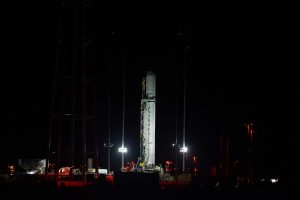Every year, from the middle of July to the end of August, the Perseid meteor shower—also known as the Perseids—is visible.
According to the sky watching website In The Sky, the shower will peak this year around August 13, 2023.
The moon will only be 10% lighted in 2023, which will be a favourable year for the Perseids.
The Comet Swift-Tuttle, which last came within striking distance of Earth in 1992, left behind debris, including pieces of ice and rock, which is what gives rise to the Perseids. On August 11–12, as Earth passes through the dustiest and densest region, the Perseids are at their height. The number of meteors per hour increases in years without a moon, and in years with an outburst (like 2016), the pace might reach 150–200 meteors per hour.
According to NASA, you can anticipate seeing up to 100 meteors per hour during the Perseid peak.
The full moon in 2022 had an impact on the Perseids by lighting up the sky and obscuring fainter meteors. This year, though, the moon will only slightly obstruct the meteor shower because it will only be 10% illuminated at the peak.
When a typical Perseid meteoroid enters Earth’s atmosphere, it travels at a speed of 133,200 mph (214,365 kph), which is when it is referred to as a meteor. The majority of the Perseids are small, resembling a sand grain. The bits hardly ever impact the ground, but when they do, they are referred to be meteorites.
The Perseids are extremely hot objects, with each fragment travelling through the atmosphere and compressing and heating the air in front of it to temperatures of more than 3,000 degrees Fahrenheit (1,650 degrees Celsius). At a distance of around 60 miles (97 km), the majority of the debris are visible.
Also Read: Who is Reid Wiseman, NASA’s Artemis II commander?
The comet Swift-Tuttle is to blame for the Perseid meteor shower.
Two astronomers, Lewis Swift and Horace Tuttle, independently discovered Swift-Tuttle in 1862. It was too dim to be seen with the naked eye when it last passed by Earth in 1992. If forecasts are accurate, the next visit in 2126 might transform it into a comet that can be seen with the naked eye that is equivalent in brightness to the Hale-Bopp comet from 1997.
The largest object known to repeatedly pass by Earth is the comet Swift-Tuttle, whose nucleus is around 16 miles (26 km) wide. The next time it will come close to Earth during its orbit around the sun is in 2126, as opposed to 1992 when it last did so.
The constellation from which the meteors appear to come is used to name meteor showers. The Northern Hemisphere constellation Perseus appears to be coming from the direction of the Perseids from Earth’s vantage point.
Best Time to View the Shower
The best time to look for meteors is in the pre-dawn hours.
You’ll usually have the best chance to see the sky dotted with brilliant meteors on peak viewing days. Look north and up to see the meteors. Those in southern latitudes can observe more meteors by looking northeast.
According to AMS, those watching the skies for the Perseids may also catch a glimpse of a few wayward meteors from the southern delta Aquariid meteor shower, which peaks in late July. Despite being best seen from the Southern Hemisphere, the southern delta Aquariids can occasionally be seen from mid-latitudes in the Northern Hemisphere.
Date, time and other details
When: July 14 to August 24
Peak: Aug. 13
Comet of origin: 109P/Swift-Tuttle
Zenithal Hourly Rate (ZHR): 100
(The number of meteors a single observer would see in an hour of peak activity with a clear, dark sky and the radiant at the zenith).







